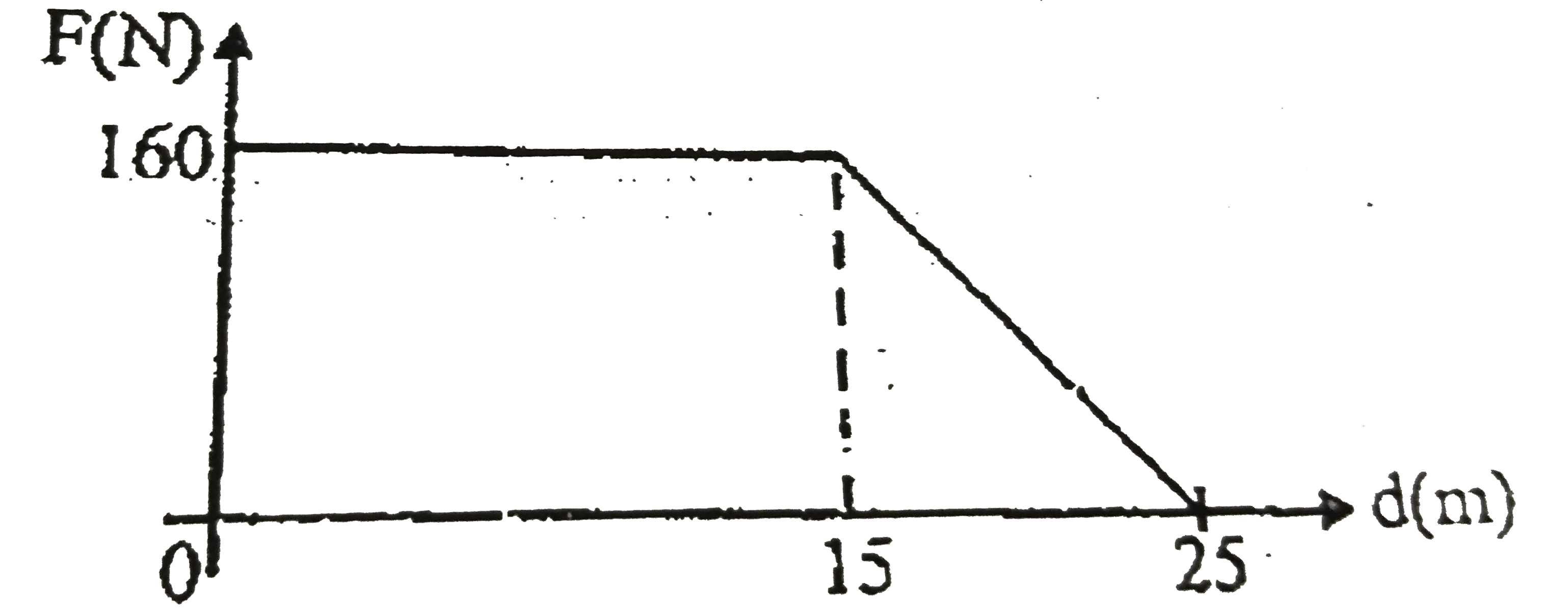A car is initially travelling at 50.0 km/h. The brakes are applied and the car stops over a distance of 35 m. What was magnitude of the car's acceleration while it was braking ?
2.8m/s2
5.4m/s2
36m/s2
71m/s2
The correct Answer is:A
To find the magnitude of the car's acceleration while it was braking, we can follow these steps:
Step 1: Convert the initial velocity from km/h to m/s
The initial velocity u is given as 50.0 km/h. We need to convert this to meters per second (m/s) using the conversion factor 1 km/h=518 m/s.
u=50.0 km/h×518=25018≈13.89 m/s
Step 2: Identify the final velocity
Since the car comes to a stop, the final velocity v is 0 m/s.
v=0 m/s
Step 3: Identify the distance traveled
The distance s over which the car stops is given as 35 m.
s=35 m
Step 4: Use the kinematic equation
We can use the kinematic equation that relates initial velocity, final velocity, acceleration, and distance:
v2=u2+2as
Substituting the known values into the equation:
0=(13.89)2+2a(35)
Step 5: Rearranging the equation to solve for acceleration
Rearranging the equation to isolate a:
0=192.61+70a
70a=−192.61
a=−192.6170≈−2.75 m/s2
Step 6: Find the magnitude of acceleration
Since we are asked for the magnitude of the acceleration, we take the absolute value:
|a|≈2.75 m/s2
Final Answer
The magnitude of the car's acceleration while it was braking is approximately 2.75 m/s².
---
The initial velocity u is given as 50.0 km/h. We need to convert this to meters per second (m/s) using the conversion factor 1 km/h=518 m/s.
Since the car comes to a stop, the final velocity v is 0 m/s.
The distance s over which the car stops is given as 35 m.
We can use the kinematic equation that relates initial velocity, final velocity, acceleration, and distance:
Rearranging the equation to isolate a:
70a=−192.61
a=−192.6170≈−2.75 m/s2
Since we are asked for the magnitude of the acceleration, we take the absolute value:
The magnitude of the car's acceleration while it was braking is approximately 2.75 m/s².
Topper's Solved these Questions
- BOOK - RESNICK AND HALLIDAYCHAPTER - MOTION ALONG A STRAIGHT LINEEXERCISE - PRACTICE QUESTIONS ( More than One Correct Choice Type )6videos
MOTION ALONG A STRAIGHT LINE
- BOOK - RESNICK AND HALLIDAYCHAPTER - MOTION ALONG A STRAIGHT LINEEXERCISE - PRACTICE QUESTIONS ( Linked Comprehension )15videos
MOTION ALONG A STRAIGHT LINE
- BOOK - RESNICK AND HALLIDAYCHAPTER - MOTION ALONG A STRAIGHT LINEEXERCISE - PROBLEMS53videos
MOTION ALONG A STRAIGHT LINE
- BOOK - RESNICK AND HALLIDAYCHAPTER - MAGNETIC FORCEEXERCISE - Practice Questions (Integer type )7videos
MAGNETIC FORCE
- BOOK - RESNICK AND HALLIDAYCHAPTER - MOTION IN TWO AND THREE DIMENSIONSEXERCISE - PRACTICE QUESTIONS (MATRIX-MATCH)10videos
MOTION IN TWO AND THREE DIMENSIONS
Similar Questions
What is the average speed of the car if it travels a distance of d km in t h ?
View SolutionA car that weighs 1.30×104 N is initially moving at 35 km/h when the brakes are applied and the car is brought to a stop in 15 m. Assuming the force that stops the car is constant, find (a) the magnitude of the force and (b) the time required for the car experiences the same force during the braking, by what factors are (c) the stopping distance and (d) the stopping time multiplied? (There could be a lesson here about the danger of driving at high speeds.)
View Solution
Knowledge Check
- Question 1 - Select One
A cylist travelling at 10m/s applies brakes and stops in 25m m. The graph shows the magnitude of the braking force versus the distance travelled.

What is the total mass of bike and cyelist?A20 kgB40kgC64 kgD80kg - Question 2 - Select One
A car is traveling at 7.0 m/s when the driver applies the brakes. The car moves 1.5 m before it comes to a complete stop. It the car had been moving at 14 m/s, how far would it have continued to move after the brakes were applied ? Assume the braking force is constant .
A1.5mB4.5mC7.5mD6.0m
A car was moving at a rate of 18 km/h. When thebrakes were applied, it comes to rest in a distance of 100 m. Calculate the reterdation produced by the brakes.
View SolutionA car is travelling at 20 m/s along a road. A child runs out into the road 50 m ahead and the car driver steps on the brake pedal. What must the car's deceleration be if the car is to stop just before it reaches the child ?
View SolutionA car was movig at a rate of 18kmh−1 . When the brakes were applied, it comes to rest in a distance of 100 m. Calculate the retardation produced by the brakes.
View SolutionA car is travelling on road at 50kmh−1. The driver applies brakes and brings the car to rest. Which frictional force does more work: (a) the force between the wheels and the brakes or (b) the force between the wheels and the road?
View SolutionA car travelling at 36km/h speeds upto 72km/h in 5 seconds. What is its acceleration ? If the same car stops in 20 seconds , what is the acceleration?
View SolutionA long a straight road, a car moving with a speed of 130 km/h is brought to a stop in a distance of 210 m. (a) Find the magnitude of the deceleration of the car ( assumed uniform ). (b) How long does it take for the car to stop ?
View Solution

